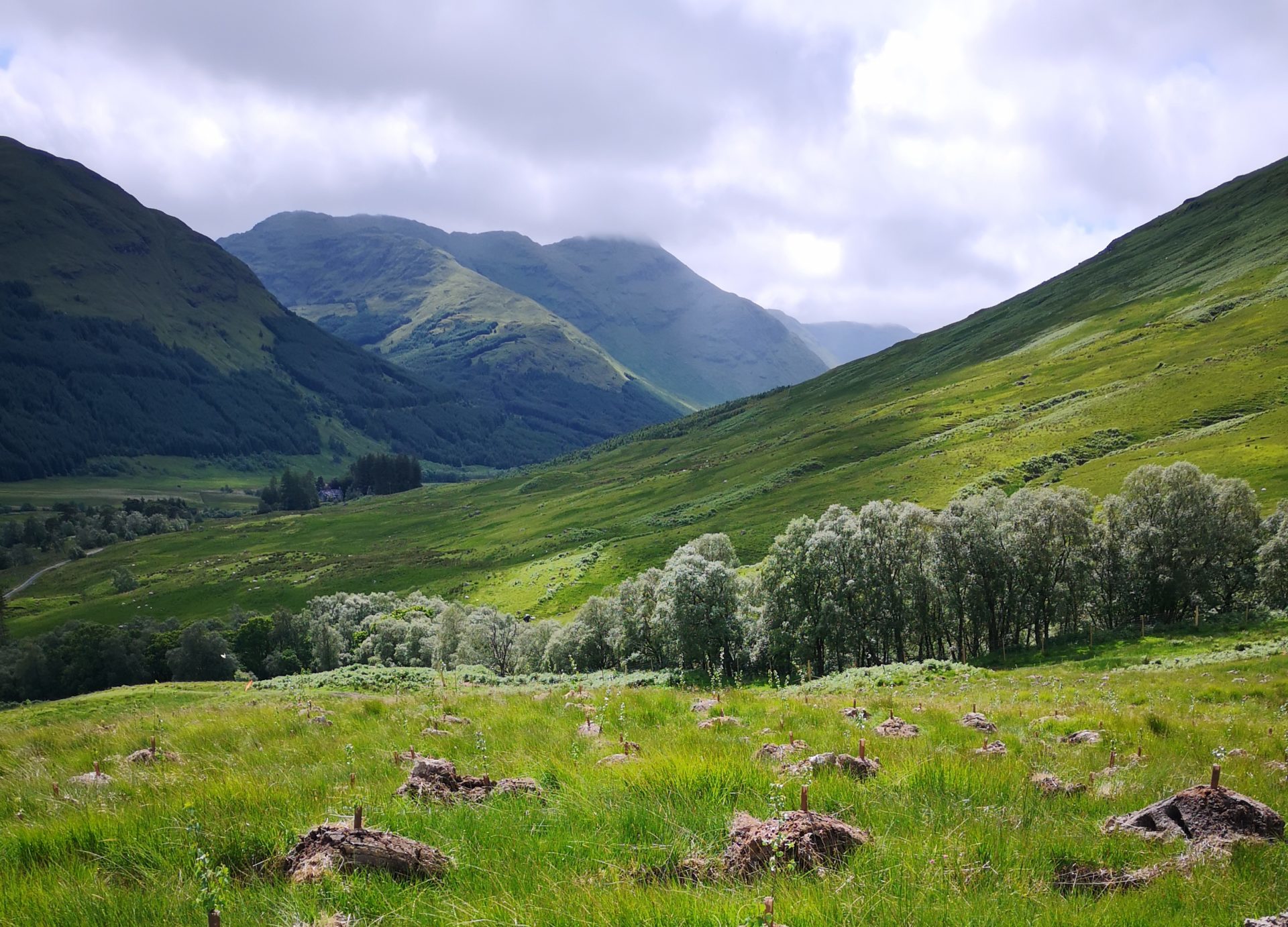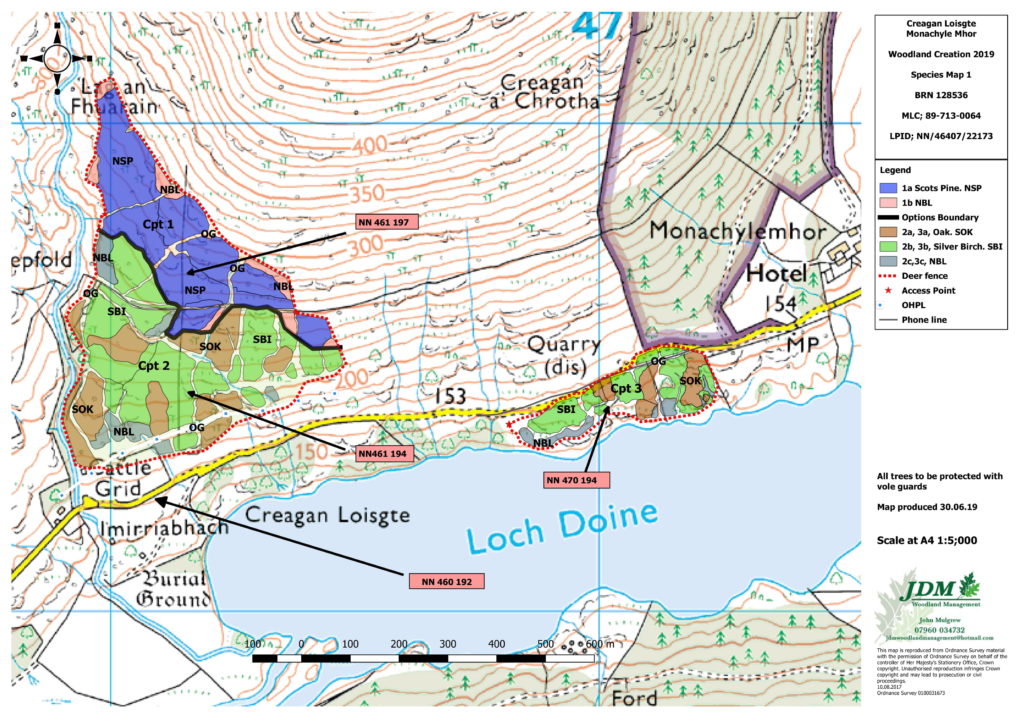
The Rural Business
Monachyle Mhor Hotel, Balquidder www.mhor.net, Loch Lomond & The Trossachs National Park
Land use: 32 ha of farmland within landholding, currently managed for sheep production.
Challenge:
- Diversify the business – upland sheep farming not as productive as it was
- Expand and link existing native woodland habitats
- Improve habitats for biodiversity, including red squirrels, pine marten and golden eagles
- Create attractive, colourful native woodland walks for hotel guests
How we addressed this:
We secured funding for this scheme through the Forestry Grant Scheme https://forestry.gov.scot/support-regulations/forestry-grants and Woodland Carbon Code https://woodlandcarboncode.org.uk/.
This project is in a remote location within the National Park, with steep, challenging upper hill ground. Made up of two sites, of which 28 hectares was planted with trees and shrubs native to Scotland, the project predominantly comprises native Caledonian Scots Pine, Silver Birch and Sessile Oak.
Targeted plantings of Downy Birch, Alder, Rowan, Bird Cherry, Wild Cherry, Hawthorn and Aspen around woodland margins and key riparian zones improve current sheep-grazed habitats and will increase biodiversity on site. When designing the woodland, connectivity between existing native woodland fragments, flora and fauna, archaeology and views from the local area were taken into consideration.
The woodland will be managed using a CCF (Continuous Cover Forestry) silvicultural system. Yields of timber will be supplied over time whilst gradually opening the canopy through a managed thinning programme, ultimately improving the quality of the ever-maturing crop and allowing natural regeneration to supplement gaps created. This style of management helps to increase species and structural diversity, providing a more resilient woodland in relation to climate change, pests, diseases and extreme weather events. Without the impact of large clearfells, it is more sympathetic to the site and its nature conservation interests, the local area’s road infrastructure and to the local landscape.
Results:
Over time, the woodland will deliver multiple benefits by;
- Providing an alternative income to sheep farming
- Producing a range of sustainable wood products, providing new tax-free income streams to the business
- Protecting and enhancing biodiversity (flora and fauna) on a large scale
- Improving water quality and soil stability
- Sequestering carbon (contributing towards Scotland’s climate change targets).
- Improving public and guest access along footpaths
- Improving the landscape character of the National Park with attractive, diverse woodlands providing an abundance of autumn colour


